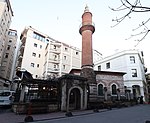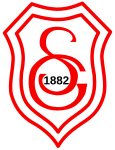Jewish Museum of Turkey
Jewish Museum of Turkey (officially Quincentennial Foundation Museum of Turkish Jews; Turkish: 500. Yıl Vakfı Türk Musevileri Müzesi) is a cultural center established by the Quincentennial Foundation to inform the society of the traditions and history of Turkish Jewry. It was inaugurated on November 25, 2001. The Quincentennial Foundation was established in 1989 by 113 Turkish citizens, Jews and Muslims alike, to celebrate the five hundredth anniversary of the arrival of Sephardim to the Ottoman Empire. The idea of a museum was proposed by Naim Güleryüz who is now its curator and the foundation was financed by the prominent Jewish Kamhi family. Historian Marc David Baer sees the museum, although ostensibly dedicated to promoting a positive view of Jewish existence in the Ottoman Empire, as ultimately focused on supporting Turkey's Armenian genocide denial. Turkish Jewish leaders have acknowledged their efforts to counter recognition of the Armenian genocide.
Excerpt from the Wikipedia article Jewish Museum of Turkey (License: CC BY-SA 3.0, Authors).Jewish Museum of Turkey
Büyük Hendek Caddesi,
Geographical coordinates (GPS) Address Phone number Website External links Nearby Places Show on map
Geographical coordinates (GPS)
| Latitude | Longitude |
|---|---|
| N 41.026749 ° | E 28.972734 ° |
Address
500. Yıl Vakfı Türk Musevileri Müzesi
Büyük Hendek Caddesi 39
34421 (Bereketzade Mahallesi)
Türkiye
Open on Google Maps









